July 28, 2023
With soil moisture at the lowest levels in a decade and acreages down, what will this season bring for Canadian lentil and pea production? Gaurav Jain looks at the numbers.

The weather has not been kind to Canadian farmers in 2023. With cropping regions having witnessed less than normal rainfall, farmers had to plant the seeds in soil with sub-optimal moisture levels. Although pulses crops are able to thrive in drier conditions to an extent, the extreme lack of precipitation this year is causing stress to crops like field peas and lentils, in addition to wheat and canola.
The dry pea yield in the country has been in the range of 2 t/ha to 3 t/ha for almost two decades, besides a significant drop to below 1.5 t/ha in 2021 when the region faced exceptional drought.
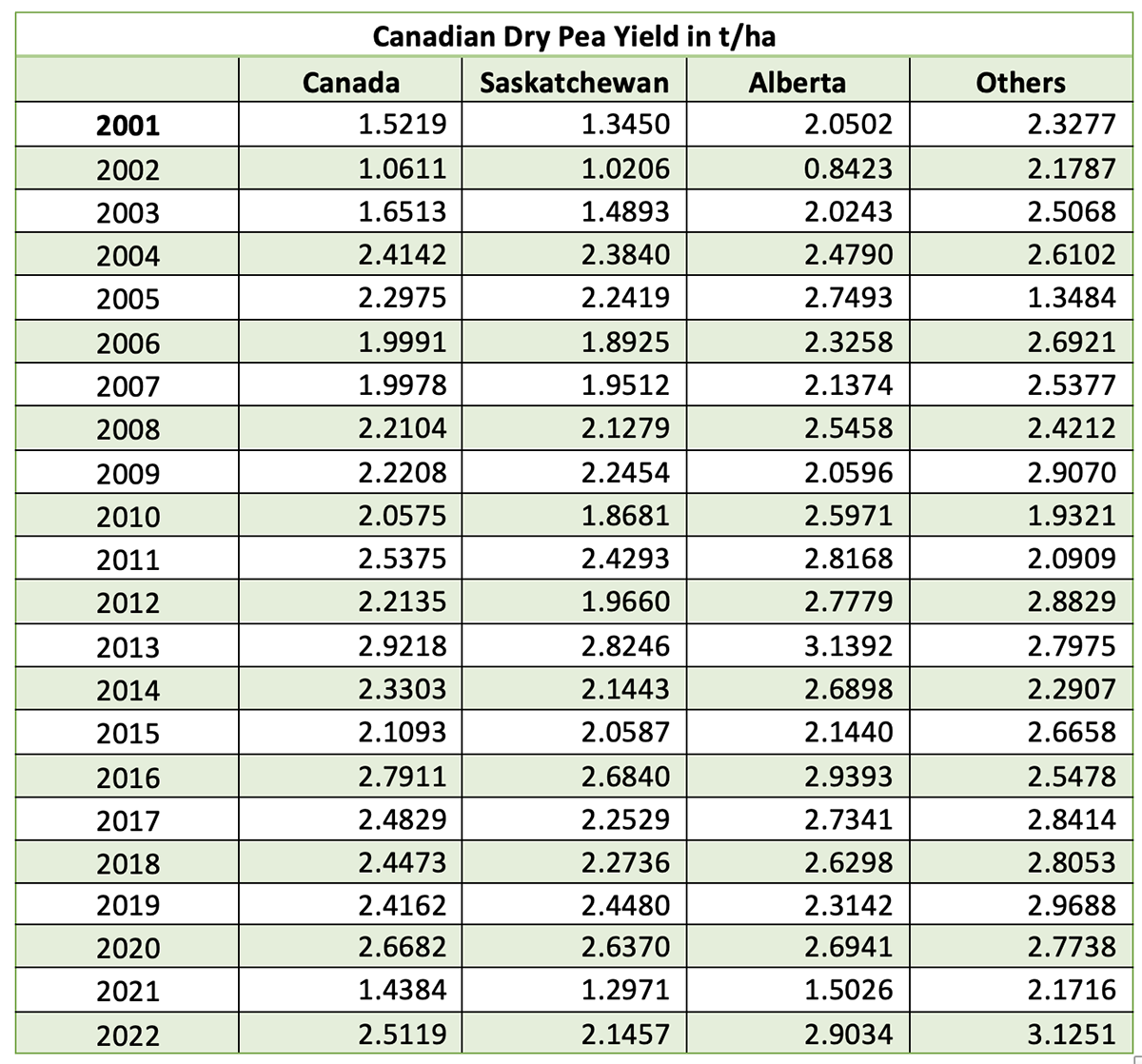
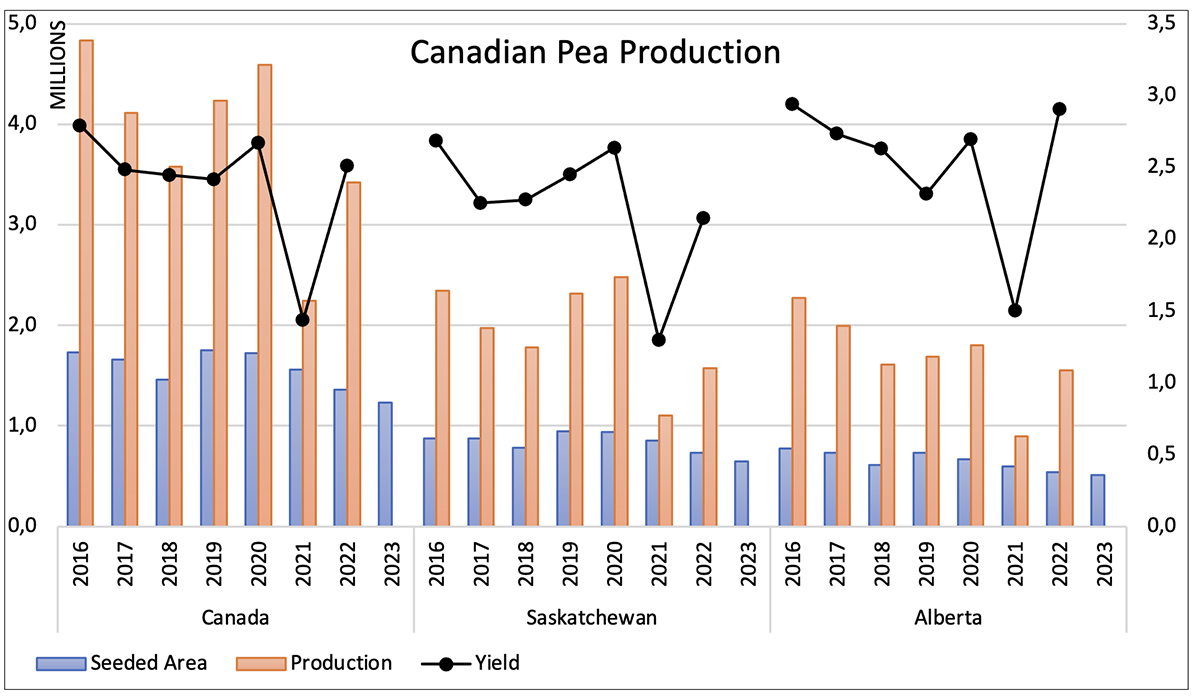
According to the latest acreage report, Canadian farmers allocated 10% less land for dry peas this year than in 2022. The 2023 figure of 1.23 million hectares is down by 22% on the five year average.
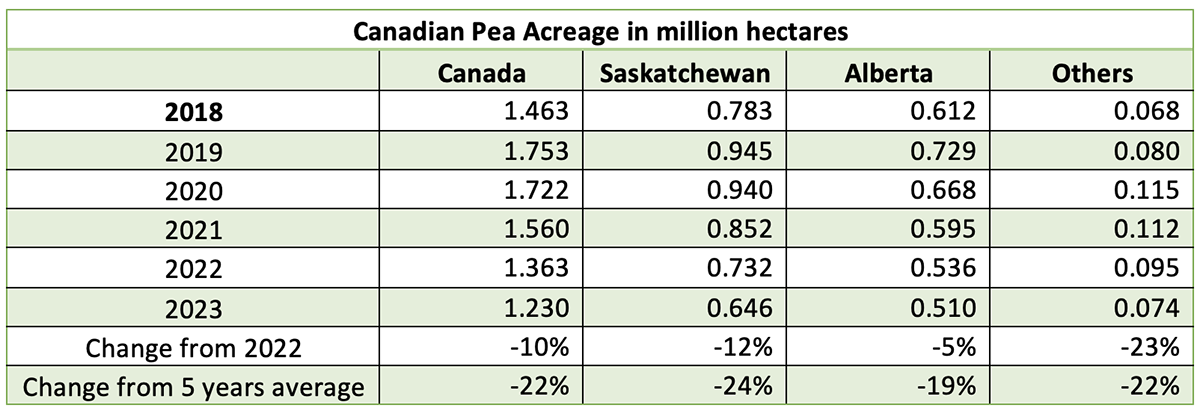
Putting these numbers in perspective, Agriculture & Agri-Food Canada (AAFC) in its latest crop report cut the production estimate to 2.9 MMT, 11% lower than last year.
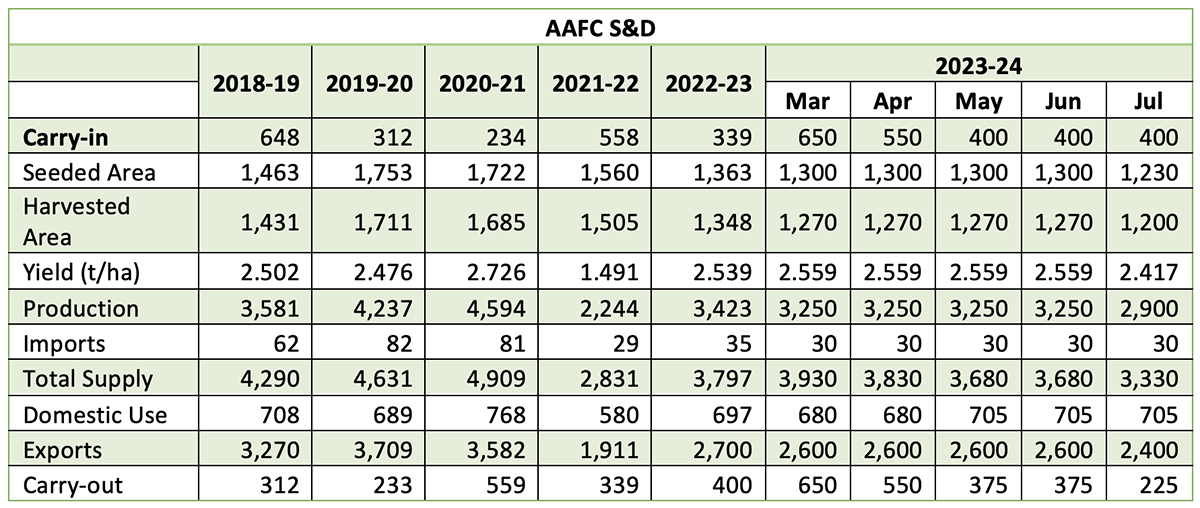
Between March and June in Saskatchewan, the largest pea growing province, soil moisture is at the lowest levels in more than a decade. As the growing season progresses, it is likely that the heat combined with sporadic rains in the region will deplete it further.
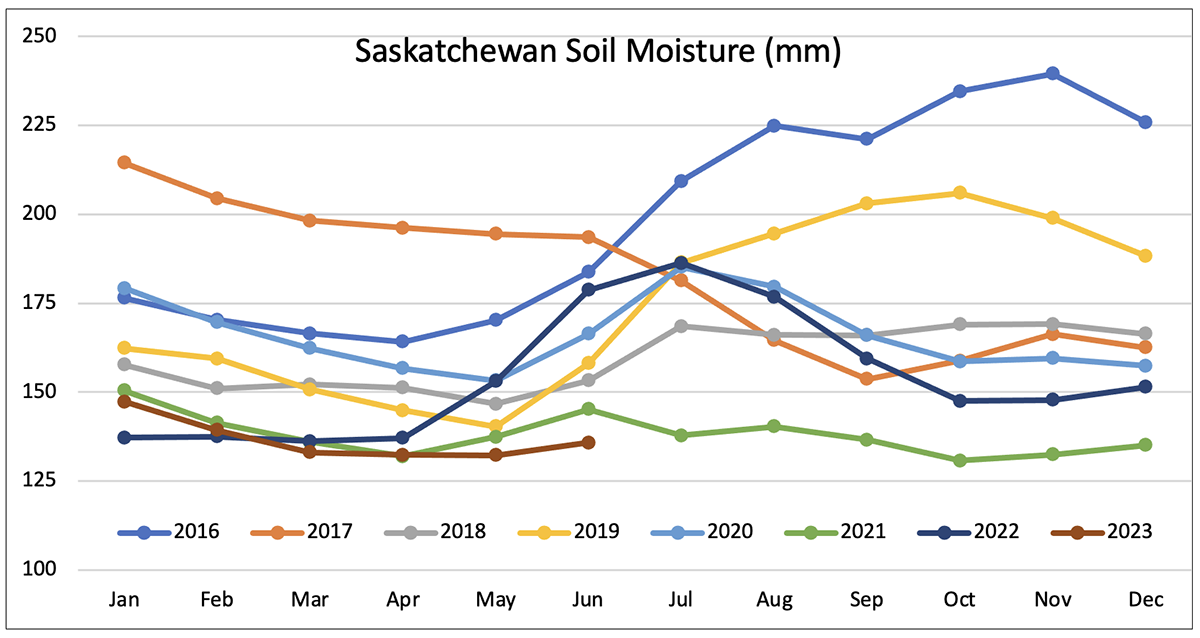
With a 10% decrease in acreage, the lowest soil moisture in a decade and falling Normalized Difference Vegetation Index (NDVI), our yield model puts a production figure of 2.52 MMT in the realistic scenario. However, a pessimistic scenario, with continued low precipitation over the next 3-4 weeks, puts the production at just 1.78 MMT.

Disclaimer: The opinions or views expressed in this publication are those of the authors or quoted persons. They do not purport to reflect the opinions or views of the Global Pulse Confederation or its members.